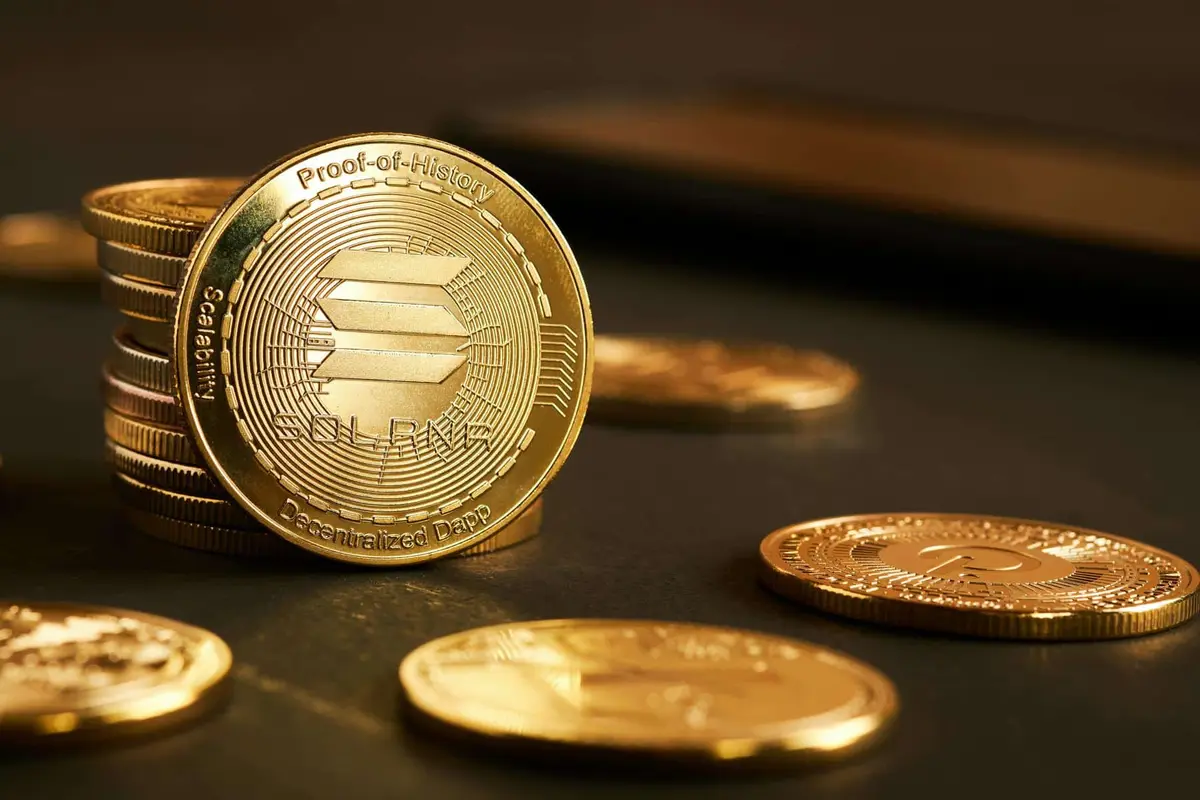In the midst of strategizing, we can win from a thousand miles away. Hello everyone, I am Lin Chao, a global financial market observer, focusing on cryptocurrency market analysis, bringing you the most in-depth trading information analysis and technical teaching.

Recently, many fans have messaged Lin Chao, saying they are new to the crypto space and don’t know how to play in this market. They have only heard that many friends around them are making money trading cryptocurrencies, but they seem unaware of what this market is, and they don’t even know what spot and contracts mean, let alone how to apply position management. When Lin Chao first entered the space, he was also confused. Not to mention needing to study fundamentals and market trends, just understanding various new terms consumed a lot of his energy, as if they were created to confuse everyone. Today, Lin Chao will combine his own experience with position management habits to explain some commonly used trading tools in the simplest language.
Have you ever tried cooking for yourself? What do you need to make a delicious meal? Ingredients, cooking skills, and tools (knife, pot, seasonings, etc.). Ingredients correspond to costs and how to select coins, cooking skills correspond to trading experience, and understanding of technical and fundamental analysis. Tools correspond to spot trading, contracts, and quantitative trading. Improving cooking skills and selecting ingredients both require long-term accumulation, which we won’t delve into for now. Let’s first discuss the most intuitive and simplest way to reduce risk probability through the correct use of tools.

The biggest difference between humans and animals is knowing how to use tools correctly. The same applies in the crypto space; to make a profit, you must first learn to use tools correctly. In our daily trading, the simplest tool is spot trading, where you buy low and sell high to earn the price difference. Taking Bitcoin as an example, if you have a capital of $100,000 and your first choice is Bitcoin, you can choose to buy Bitcoin spot. By observing Bitcoin's price movements, you find a suitable entry point to buy, wait for it to rise, and then sell. If you had done this ten years ago, you would likely be financially free by now. The advantage of spot trading is that it requires no operation; you can even store it on a hard drive. It sounds simple, but in practice, it is nearly impossible. First, your entry price must be low enough, and you must hold on without selling during the process, and finally, the entire crypto market must be in a bull market cycle, continuously rising. Once the market shifts from a bull to a bear market, experiencing a long decline, you will see your assets constantly shrinking every day, and this long-term psychological pressure is not something an average person can bear. Everyone knows that the spot market can only be viewed as bullish; once a downward trend occurs, there is nothing you can do. You can only endure or exit at a loss. So what should you do? That’s when we need to use another tool: contracts.

In simple terms, contracts amplify your funds through leverage, allowing you to quickly achieve double returns by buying up or down. Specifically, there are two types in the market. Perpetual contracts: These have no expiration date, and users can hold them indefinitely and close positions themselves. Delivery contracts: These have specific delivery dates, including weekly, bi-weekly, and quarterly delivery contracts. When the specific delivery date arrives, regardless of profit or loss, the system will automatically settle. The margin form of contracts is also divided into two types: U-based contracts and coin-based contracts. U-based contracts use USDT as the margin for trading contracts; as long as there is USDT in the account, you can operate contracts in different currencies, with profits and losses settled in USDT. Coin-based margin contracts refer to using the spot you hold in the market as collateral for contract trading. Profits and losses are also settled in the currency you hold. For example, if you hold DOGE, you can use your DOGE spot as collateral to trade Bitcoin, Ethereum, etc. The risk here is that you have to deal with the volatility of two currencies simultaneously. Therefore, broadly speaking, when people refer to contract trading, they usually mean U-based settlement.

Using a small amount of capital to invest several times the original amount, hoping to achieve multiple returns relative to the volatility of the investment target, or to incur losses, while also being able to choose different directions, either bullish or bearish, this is what contracts are. This is also what Lin Chao believes is the most flexible aspect of this market. Taking Bitcoin as an example, with a unit price of $100,000, if you use a 100x contract, the required capital would be $1,000. If you choose to go long, and Bitcoin's price rises by 1%, your capital return rate would be 100%, resulting in a profit of $1,000. Conversely, if it drops by 1%, your capital would be wiped out, resulting in a "liquidation." Many people know that contracts involve leverage, but few know how to use this tool correctly.

Let’s take Bitcoin as an example again. If you already hold 10 Bitcoin in spot, and the market is in a bull phase, your daily returns are considerable. But what if it drops? The risk probability turns negative, resulting in a loss (unrealized loss). At this point, we can use the contract tool to short 10 Bitcoin proportionally. Your unrealized loss in spot will be converted into unrealized profit in the contract. It’s like hitting the pause button during a downtrend. Although the daily return may be 0, it won’t be negative. Once the market stabilizes and continues to rise, you can close the short position and continue profiting from the spot. This way, we can reduce losses caused by market volatility and avoid affecting our overall trading mindset due to being unable to take any action during a prolonged bear market. Plus, it only requires a relatively small cost (contract fees).
Nowadays, many people fear contracts, even demonizing them. This is not objective. Those who promote the idea that contracts are harmful are exploiting people's fears, amplifying their downsides to gain resonance. Lin Chao has repeatedly emphasized that contracts are just a tool, just like we need a knife in cooking. A knife can cut vegetables but can also cut fingers; we cannot avoid using this tool just because it can cause injury, nor should we flaunt our knife skills by carrying a knife around. Do not let fear paralyze you, and do not be careless just because you are skilled. In short, existence is reasonable; the tool itself is not "guilty." The "guilt" lies with those who misuse the tool.

Some people say they don’t want to monitor the market, don’t want to take on greater risks, but also don’t want to miss out on the market's benefits. How can they participate? There is another tool: quantitative trading. What is quantitative trading? In Lin Chao's view, it is like pre-prepared meals. You prepare the program in advance, specifying what ingredients to use, how much seasoning to add, and how long to heat it in the microwave. You can eat it, but it lacks soul and cannot be served at a formal table.
Quantitative trading refers to quantifying trading strategies. The term "quantitative" essentially means expressing the advantageous conditions in a trading strategy in language, quantifying them into objective conditions, and then presenting them in strict programming code for the computer to execute. Generally, a trading strategy consists of many advantageous market conditions (also called advantageous factors). A trade will only be executed when the market simultaneously meets these conditions. If these conditions are expressed in computer language, they would become a long string of if…if…do statements. The biggest advantage of quantitative trading is that it eliminates issues of mindset and execution; it can follow your trading strategy 100%, without becoming extreme or conservative due to short-term gains or losses, and it won’t miss trading opportunities because you are asleep. However, there are also drawbacks; it is not flexible and cannot recognize changes in fundamentals. When significant positive or negative news arises, quantitative trading cannot assess the depth of the trade.

Taking Bitcoin as an example again, if at this moment, Powell announces an interest rate cut, Bitcoin will likely rise, possibly by 10% or even more. However, quantitative trading cannot preset fundamentals and cannot sense market sentiment. It may passively take profits based on program settings when it has gained 2-3%, thus missing out on the main upward wave of the market. Moreover, with so many quantitative programs available, each corresponds to a specific operational plan, and it also requires a lot of time to find a suitable quantitative tool. Lin Chao believes it is better to spend that time honing your trading habits and developing your trading system.

Lin Chao's Summary
In trading layout, Lin Chao never relies on a single tool but combines all available tools to achieve profits based on different market environments and trading conditions. He neither feels regret for missing opportunities nor fears being unable to turn back due to a one-sided decline. Trading is inherently complex; some people only want to hold spot, hoping for a one-time solution. Some engage in aggressive high-risk trading (only trading contracts), hoping to get rich overnight. Some are too lazy to study and just want machines to make money for them. In fact, risk itself is not scary; what is scary is when risk arises, and we don’t even know how to use basic coping tools. Building a trading system is a long-term process, and the foundation is to use tools correctly: holding spot for the long term, combined with short-term control through contracts, plus a portion of quantitative positions, is the correct way to survive in this market.
The essence of trading is simplicity; in this regard, trading is not much different from cooking.

The market is always the market; the harsh reality will not change because of your losses, nor will it stop because of your tears and complaints. To change your fate, you must continuously learn investment skills and improve your strength to truly stand firm. The biggest prison in the world is the human mindset. If you cannot earn money beyond your cognition, then learn to leverage others.
The global market is ever-changing, and the world is a whole. Follow Lin Chao to gain a top-tier global financial perspective.

For real-time consultation, please follow the public account: Lin Chao on Cryptocurrency.
免责声明:本文章仅代表作者个人观点,不代表本平台的立场和观点。本文章仅供信息分享,不构成对任何人的任何投资建议。用户与作者之间的任何争议,与本平台无关。如网页中刊载的文章或图片涉及侵权,请提供相关的权利证明和身份证明发送邮件到support@aicoin.com,本平台相关工作人员将会进行核查。



